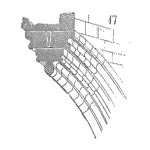
The last post in this series dealt with management in design and the influence that leadership in design and product development has on the product reliability process. This post will turn to quality and reliability (Q & R) engineers, again looking at the role of that position in relation to product reliability. The next post in this series will take a look at the role of quality and reliability managers.
The role of the quality and reliability engineer
The role for quality and reliability engineers is often only limited by the individual’s initiative. The focus is on product Q &R and includes influences across the entire organization. The design team requires advice and feedback to design a product that meets customer expectations. The manufacturing teams require insights and measurements that enable stable and capable processes. The procurement teams require knowledge, guidance, and assistance when selecting vendors that will provide or improve the supply of valuable materials.
The Q & R engineer’s primary role can often be design or manufacturing-centric, often being associated with the performance of statistical analysis and conduction of environmental stress testing and qualifications. When the focus turns to the product goals for performance in the hands of customers, then the scope of Q & R engineers spans the organization.
What does a Q & R engineer contribute?
A reliability engineer may begin with the creation of reliability predictions for a new product design. This is not the only task expected though. An organization requires a reliability prediction to make decisions, inform customers, and plan production, yet the organization also needs to know what will fail and when it is likely to fail in greater detail to avoid or mitigate those risks.
Q & R engineers are in the business of identifying and resolving product performance risks. This can be accomplished once field failures occur or during the early design process. The most successful engineers tend to be proactive and work to avoid field failures.
Teach a man to fish…
An even more essential role played by the Q & R engineer involves teaching, coaching, or mentoring members of the rest of the organization to fully consider the impact of their decisions on product Q & R performance. Transferring the unique education and experience of the Q & R engineer to design, manufacturing, procurement, and other disciplines will greatly expand the effectiveness of a single Q & R engineer. The ability of others to identify risk, consider Q & R fully during tradeoff decision making, and become aware of Q & R goals and progress permits the Q & R engineer to effectively influence an entire organization.
The real test of the effectiveness of an individual Q & R engineer takes place when that engineer leaves the organization. If the product’s Q & R performance declines, we may conclude that the organization did not adopt and incorporate the breadth of reliability practices. If, however, the Q & R performance remains stable or continues to improve, the organization successfully created sustaining business processes coupled with sufficient reliability engineering knowledge to continue developing reliable products.
Leave a Reply